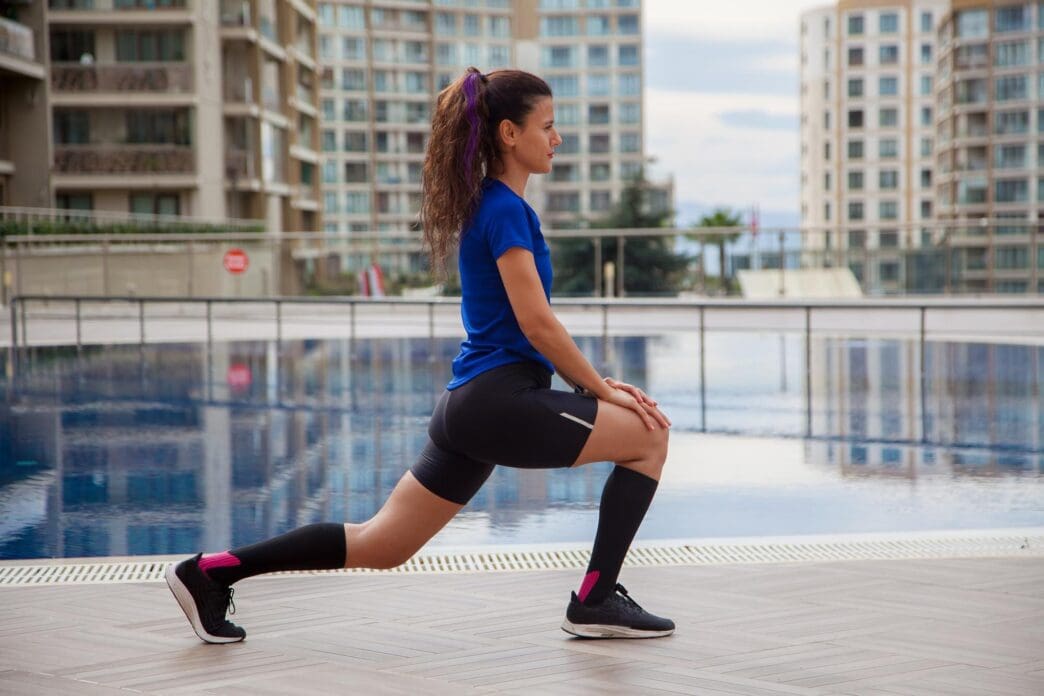A Quick Takeaway
The Story Behind the Trend
How to Make It Work for You
The Community View
Unlocking optimal movement and preventing common aches often begins at two critical points in the body: the ankles and hips. These foundational joints, responsible for a vast range of motion, are essential for everything from walking and running to lifting and maintaining balance. Improving their flexibility and strength, a process known as enhancing mobility, can significantly reduce the risk of injury, alleviate chronic pain, and dramatically boost overall athletic performance and daily comfort for individuals of all ages and activity levels.
Why Ankle and Hip Mobility Matter
The ankles and hips are integral links in the body’s kinetic chain, meaning their function directly impacts the joints above and below them. Restricted mobility in either area can lead to compensatory movements, placing undue stress on knees, the lower back, and even the shoulders and neck.
For athletes, fluid ankle and hip movement translates to greater power, agility, and efficiency in sports like running, cycling, and weightlifting. For the general population, it means easier bending, squatting, climbing stairs, and a reduced likelihood of falls, enhancing quality of life and independence.
Understanding Mobility Restrictions
Modern lifestyles, often characterized by prolonged sitting and lack of varied movement, are primary culprits behind stiff ankles and hips. Sedentary habits can cause muscles to shorten and tighten, leading to imbalances and reduced joint range of motion over time.
Beyond lifestyle, factors like previous injuries, scar tissue, genetic predispositions, and even footwear choices can contribute to mobility limitations. Addressing these restrictions through targeted exercises is crucial for restoring natural movement patterns.
Simple Moves for Ankle Mobility
Prioritizing ankle mobility can prevent issues like plantar fasciitis, Achilles tendonitis, and knee pain, while improving squat depth and running mechanics. These simple exercises can be performed daily.
Ankle Circles
Sit or lie down, then lift one foot slightly off the ground. Slowly rotate your ankle in large circles, moving clockwise for 10-15 repetitions, then counter-clockwise for the same amount. This gentle movement helps lubricate the joint and improve range of motion in all directions.
Ankle Dorsiflexion Stretch
Kneel on one knee, placing your front foot flat on the floor directly under your knee. Gently lean forward, pushing your knee over your toes while keeping your heel on the ground. Hold this stretch for 20-30 seconds, feeling the stretch in your calf and Achilles tendon, then switch sides.
Calf Raises with Controlled Range
Stand with your feet hip-width apart, holding onto a stable surface for balance if needed. Slowly lift onto the balls of your feet, focusing on a full range of motion at the ankle, then slowly lower your heels below the level of your toes if possible (e.g., on a step). Perform 10-15 controlled repetitions, emphasizing both the upward and downward phases.
Simple Moves for Hip Mobility
Flexible hips are vital for lower back health, powerful leg movements, and maintaining an upright posture. Incorporate these exercises to unlock greater hip freedom.
Half-Kneeling Hip Flexor Stretch
Kneel on one knee with the other foot flat on the floor in front of you, forming a 90-degree angle. Gently tuck your pelvis slightly forward and squeeze the glute of your kneeling leg. You should feel a stretch in the front of your hip and thigh; hold for 20-30 seconds per side.
90/90 Hip Rotation
Sit on the floor with both knees bent and feet flat. Let your knees drop to one side, forming a 90-degree angle with both legs (one shin in front, one out to the side). Keep your torso upright and gently lean forward over the front leg to deepen the stretch. Hold for 30-60 seconds, then rotate your knees to the other side.
Glute Bridge
Lie on your back with knees bent, feet flat on the floor hip-width apart, and arms by your sides. Press through your heels and squeeze your glutes to lift your hips off the floor until your body forms a straight line from shoulders to knees. Hold briefly at the top, focusing on hip extension, then slowly lower back down for 10-15 repetitions.
Figure-Four Stretch (Piriformis)
Lie on your back with both knees bent. Cross one ankle over the opposite knee, forming a “figure four” shape. Gently pull the bottom knee towards your chest, feeling the stretch in your glute and outer hip. Hold for 20-30 seconds per side.
Integrating Mobility into Your Routine
Consistency is paramount when it comes to improving mobility. Aim to dedicate 5-10 minutes daily, or at least several times a week, to these movements. You can incorporate them as part of your warm-up before exercise, a cool-down afterward, or as standalone breaks throughout your day, especially if you have a sedentary job.
Always perform these exercises with control and listen to your body. You should feel a gentle stretch, never sharp pain. Over time, you’ll notice a significant improvement in your flexibility, comfort, and overall ease of movement.
Your Path to Enhanced Movement
By consistently dedicating time to simple ankle and hip mobility exercises, you are investing directly in your long-term physical health and performance. These movements are powerful tools for preventing injuries, alleviating discomfort, and unlocking a greater range of motion for all your daily activities. Embrace the journey to more fluid, pain-free movement, and experience the profound benefits of a body that moves with ease and strength.







